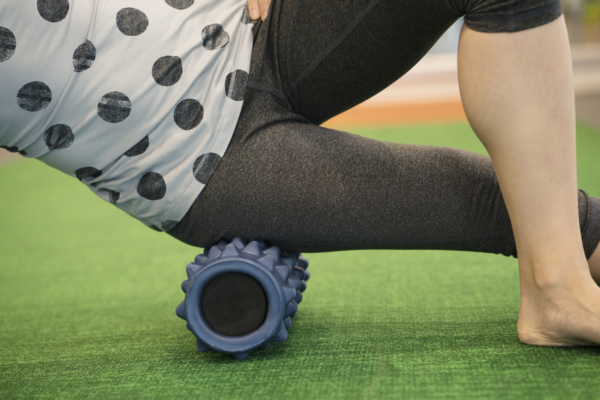Ask a Pilates teacher to choose their favourite small prop and the answer you’ll most often hear is: “a foam roller, of course”.
But why do instructors rate foam rollers for Pilates so highly?
Well, aside from being a compact and versatile device that can be used for both self-massage and exercise, it is also an easy piece of kit to get your hands on. You’ll usually find a foam roller in your local gym or you can buy one in most sports shops.
On top of all that, foam rollers are pretty cheap (usually costing between £10 – £30) and can be used in ways that mimic the Pilates machines. This makes them a great way to get a full-body Pilates workout without the expense of the pricey equipment.
If you’re thinking about investing in a foam roller (or perhaps you’ve been neglecting the one you already own), then read on to find out the amazing benefits that come from putting the foam roller to regular use.
What is a foam roller?
Foam rollers are long, cylindrical shaped tubes and are usually made from a type of foam called EVA.
Having said that, foam rollers can also come in a variety of shapes, lengths and textures. You’ll find that some foam rollers have raised, wave-like ridges. While others are covered in a pattern of small bumps.
The type of foam used varies as well to create rollers of different densities. Density is usually indicated by the colour of the foam roller. As a general guide, black foam rollers are usually the densest and therefore the hardest. Blue rollers are medium density and white foam rollers are made from the softest material.
How do I use the foam roller?
Massage
You can give yourself a great massage using the foam roller. Simply sit (or lie) on the floor and place the foam roller under the bit of your body you want to work on – say, your hamstrings.
From there, slowly move up and down and allow the foam roller to roll underneath you. Use the pressure of the foam roller to massage you, pausing a little longer on any spots you feel need releasing.
Exercise
Foam rollers can also be used for exercise or mobilisation work.
For example, when placed behind your mid-back, the foam roller’s curved surface acts a bit like the Pilates barrel and helps to support your spine as you extend it backwards. Over time, performing this move using the foam roller helps to increase the flexibility of the spine.
Want to work your abdominals? Prop your sacrum on the foam roller and perform the simple Pilates femur arc/deadbug exercise to access the deepest abdominal fibres that are so important but often get neglected in other ab work.
Or, come onto all fours and place the foam roller underneath your shins. From here, try the reformer exercises “reverse abdominals”.
The foam roller in this instance acts like the moving carriage of the reformer, making this move a challenging one! Using the foam roller like this is an effective way of getting the benefits of Pilates outside of Pilates classes.

Benefits of using the foam roller
Massage
If you’re an active person, experts recommend you get a regular massage to aid recovery and prevent injury. Realistically, though, few of us have the time or money to have this kind of treatment once a month, let alone once a week.
Luckily, foam rolling is a cheap and effective way of massaging yourself.
And you don’t have to be a fitness enthusiast to benefit from regular rolling. If you’re desk-bound most of the time and often suffer with achy shoulders or sore lower back, using the foam roller for self-massage can also be a good way of getting rid of niggling aches and pains in these areas.

How does it work?
Rolling out your muscles regularly helps to release tension in the body, work out knots and remove physical restrictions through massage. Foam rolling is also an effective way of restoring health to the body’s fascia.
If you’ve no idea what fascia is then you’re not alone. Few people understand what the fascia is and that we need to look after it.
But we do – because fascia is the body’s connective tissue that acts like a web and covers the body’s muscles and organs and supports them. When it is healthy it is supple and glides easily allowing for healthy, pain-free movement.
However, sitting still all day at your desk makes the fascia become compressed and stiff. This can lead to movement restrictions and pain – but fortunately, practising foam rolling regularly can help combat these issues.
Exercise
Adding in Pilates foam roller exercises to your regular gym circuit is a fun way to create variety and challenge yourself.
Not only that, a foam roller-focused exercise programme can also help you increase your range of movement, and improve your strength, coordination and control. Best of all: it helps you get your Pilates equipment fix on those days you can’t make it to the studio!
Check back next week for our post introducing you to another of our favourite Pilates small props: the Pilates ball.
Education is key:
These blogs are designed to give information to everyone, however, it is important to remember that everyone is different! If you have not seen one of our therapists and have any questions about injuries, what you have read or whether this may be useful to you, please just ask. We are more than happy to help anyone and point you in the right direction. Our biggest belief is that education is key. The more you understand about your injury, illness and movement, the more you are likely to improve.





